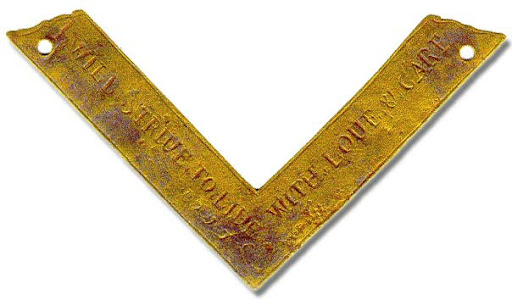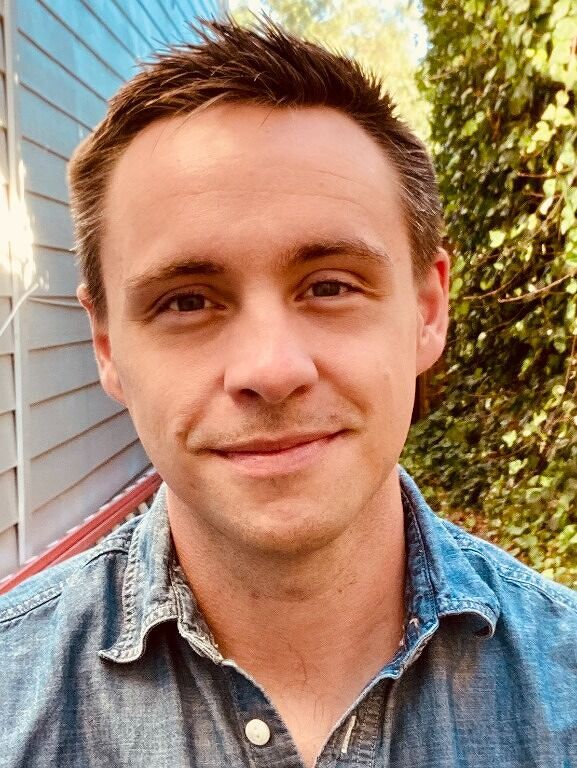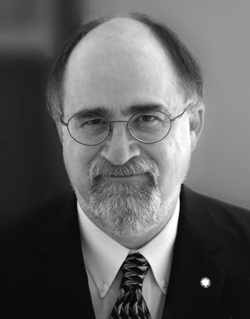Freemasonry for Men and Women: Liberty, Equality, and the Restoration of Women to Ancient Masonry
Printed in the Fall 2024 issue of Quest magazine.
Citation: Chounramany, Noy, "Freemasonry for Men and Women: Liberty, Equality, and the Restoration of Women to Ancient Masonry" Quest 112:4, pg 20-22
By Noy Chounramany
If Masonry is really anything, it is a presentment by symbol and by legend of the great fundamental truths of human life and human evolution.
—Annie Besant 33°
 Although the better-known traditions of Freemasonry prescribe that only men may become Freemasons, in reality women have been a part of Masonry and the ancient Mysteries since time immemorial and have an ancient and equitable right to become Freemasons. The involvement of women was vital to the success of the ncient Mysteries, to which Freemasonry has often been speculatively linked. Moreover, women were employed as operative stonemasons throughout history and were admitted as members of Masonic lodges before the establishment of the first Grand Lodges of Freemasonry.
Although the better-known traditions of Freemasonry prescribe that only men may become Freemasons, in reality women have been a part of Masonry and the ancient Mysteries since time immemorial and have an ancient and equitable right to become Freemasons. The involvement of women was vital to the success of the ncient Mysteries, to which Freemasonry has often been speculatively linked. Moreover, women were employed as operative stonemasons throughout history and were admitted as members of Masonic lodges before the establishment of the first Grand Lodges of Freemasonry.
Operative Stonemasons to Speculative Freemasons
Masonry teaches us to master ourselves. That is something we can do and must do to succeed. We are here to transform ourselves from rough into perfect ashlars.
—Louis Goaziou 33°
The traditions and documents of the medieval operative stonemasons serve as the direct foundation for speculative Freemasonry. To distinguish between the two, operative stonemasons work with stone and build physical structures, whereas speculative Freemasons figuratively build temples of their ideal selves by working to embody morals, ethics, and philosophical idioms that are illustrated by the imagery, symbols, and tools of operative stonemasonry.
 |
|
| The Baal’s Bridge Square, dated 1507. |
Through historical documents and relics, we know that medieval operative stonemasons upheld a culture of inner reflection and self-work. Lodge constitutions of operative stonemasons obliged their members to follow certain moral and ethical guidelines, and some even encouraged the pursuit of the seven classical liberal arts and sciences (grammar, rhetoric, logic, arithmetic, geometry, music, and astronomy). The Baal’s Bridge Square (dated 1507) is a Masonic relic that was discovered beneath the foundation stones of Baal’s Bridge in Limerick, Ireland. This brass square was brought to light in 1830 during a reconstruction of the bridge and contains the following engraved inscription: “I Will Strive to Live with Love & Care, Upon the Level, by the Square.”
During the seventeenth century, stonemasons began to admit those who were not part of the craft into their lodges. John Boswell, third Laird of Auchinleck, is the first documented nonstonemason to have attended a meeting of stonemasons on June 8, 1600, at the Lodge of Edinburgh held at Holyrood Palace in Edinburgh, Scotland. The first known admission and initiation of nonstonemasons into a Masonic Lodge occurred on July 3, 1634: Lord William Alexander, Sir Anthony Alexander, and Sir Alexander Strachan of Thornton were admitted and initiated into the Lodge of Edinburgh (Mary’s Chapel) No. 1, located in Edinburgh, Scotland.
As these and other such members were not operative stonemasons, they came to be known as Accepted Masons, who speculate upon the symbols and teachings of ancient Masonry.
Experts are split on the precise origin and meaning of the Masonic usage of the word free of the compound word “Freemason.” Some say that it is derived from the idea that stonemasons were free citizens, not being enslaved or in servitude, while others opine that it stems from the social norm that allowed stonemasons to freely travel from town to town and country to country in the pursuit and practice of their trade. There are others who propose that free is a reference to the technique of stonemasons building with free-standing stones. It has also been proposed that Freemason etymologically originates from the French frère (brother): hence frèremaçon (brother mason). As each symbol of Freemasonry may hold many meanings and interpretations, perhaps the free in Freemason refers to all of these points and more.
Women Builders
The skilled crafts and trades of history did not prohibit women from training or employment. Dr. Zahi Hawass, world-renowned Egyptologist and former minister of antiquities in Egypt, has been quoted as saying, “We now know with certainty that the pyramids were built by Egyptian men and women.”
Women also worked in the crafts and trades throughout medieval Europe. There are many historical examples of women being commissioned as painters, sculptors, glass makers, cartwrights, and shipwrights. In addition, women were trained and employed in textiles, carpentry, and stonemasonry. For example, a woman from Norwich, England, known as Gunnilda the Mason is mentioned in the 1256 Calendar for Close Rolls of the reign of Henry III. Operative stonemasonry honored women with the title of “Dame” and were authorized to oversee construction work and supervise craftsmen, as is documented in the records of the Corpus Christi Guild at York and in the Lodge Minutes of Mary’s Chapel in Edinburgh.
Women in the Masonic Old Charges
The medieval documents of operative stonemasons are collectively known as the Masonic Old Charges. These Old Charges have been cited to form the “landmarks,” guidelines, and traditions establishing the constitutions, bylaws, and regularity of speculative Freemasonry. Significantly, several of the Masonic Old Charges mention the inclusion of women.
The Regius Poem, also known as the Halliwell Manuscript, is the oldest extant Masonic Old Charge. It is dated to approximately 1390‒1450 and makes several references to women:
In that honest craft to be perfect,
And so each one shall teach the other,
And love together as sister and brother.
The tenth article is for to know,
Among the craft, to high and low,
There shall no master supplant another,
But be together as sister and brother.
That no craving be made to thee,
Nor to thy fellows in no degree,
To man or to woman, whoever he be,
Pay them well and truly, for that will we.
Both the Harleian Manuscript No. 1942 (dated 1660‒70) and the Lodge of Hope Manuscript (dated 1680) obligate and charge apprentices to respect, obey, and serve Dames. The controversial York Manuscript No. 4 (dated 1693) specifically mentions the Masonic obligation of women: “The one of the elders takeing the Booke and that hee or shee that is to bee made mason shall lay their hands thereon and the charge shall bee given.”
Although some allege that this excerpt is no more than a scribal error, York No. 4 certainly exhibits a consistency with the many Masonic Old Charges that mention the inclusion of women.
Perhaps the most incontrovertible fact confirming the originally accepted inclusion of women in Masonry is in the case of Mary Bannister of Barking, England. The 1713 member rolls of the London Company of Masons document Bannister as paying dues and being admitted for a seven-year apprenticeship.
The mounting evidence is clear: Masonry was gender-inclusive before it became a gender-exclusive institution; the exclusion of women from Freemasonry was an innovation to the established traditions of ancient Masonry. In the nineteenth century, Albert Mackey 33° (secretary general of the Supreme Council of the Ancient and Accepted Scottish Rite for the Southern Jurisdiction of the United States) stated in his famous Encyclopedia of Freemasonry: “The law which excludes women from initiation into Freemasonry is not contained in the precise words in any of the Old Constitutions . . . But in the Charges compiled by Anderson and Desaguliers, and published in 1723, the word woman is for the first time introduced and the law is made explicit.”
Women and the Ancient Mysteries
The Co-Masonic Order is distinguished from the rest of the Masonic world by the admission of women on equal terms with men. In this, it is introducing no innovation into the body of Masonry, but rather restoring one of the ancient landmarks which was forgotten during the confusion of the Mysteries with the operative Masonry of the Middle Ages. In both Egypt and Greece, as we have seen, women were admitted to the Mysteries and were able to penetrate into the inmost sanctuaries as well as men.
—C.W. Leadbeater 33°
Within lore and mythos, Freemasonry has been described as both a safekeeper of ancient wisdom and a lineage bearer of the ancient Mysteries. When we look to the past, we discover many parallels and similarities between the rituals, symbols, and secrets of Freemasonry with those of indigenous systems all over the world. For example, some of the traditional postures and gestures associated with Freemasonry are mirrored in artistic portrayals of ancient deities, kings, queens, priests, and priestesses. The square, compasses, and skirret (measure) are prominent symbols of Freemasonry which are also associated with the ancient Chinese primordial consort deities Fuxi and Nuwa, who are credited with the creation of humans and imparting various arts and sciences to humanity. As with the various pillars of Freemasonry, ancient Egyptian columns often held intrinsic meanings and were often presented as symbolical expressions, for example: obelisks alluding to the deities Ra or Aten and the djed pillar referring to the Osirian myth. Humanity’s oldest known megaliths have been unearthed at the Anatolian Neolithic site of Göbekli Tepe and feature round ceremonial and ritual structures incorporating megalithic T-shaped pillars decoratively carved with symbolical images: prominent twin pillars positioned at the center of each temple-like structure, being then enclosed by circular walls built around evenly spaced outer pillars.
Women often held prominent positions in many of the ancient Mystery traditions and religious cults. Ancient Mesopotamia had institutionalized priestesses of varying authority, with some holding great wealth and ownership of land. Ancient Egyptian cults had high temple priestesses and female servants of the gods. The Greco-Roman Mysteries had women initiates and priestesses and were open to participants of all social classes and genders. Furthermore, the famed Oracle of Delphi and the Phrygian Sibyl were esteemed positions held exclusively by women.
Co-Freemasonry: Freemasonry for Men and Women
Mixed gender Freemasonry is not a new cult, but a humanist philosophy that hopes to introduce its values in society. Human rights, peace between all the nations on earth, freedom, equality, fraternity: these are the precepts of mixed gender Freemasonry with which we hope to brighten justice, tolerance, and solidarity.
—Georges Martin 33°
During the nineteenth century, several Freemasons began lobbying the established Masonic Grand Lodges for the restoration of women to ancient Masonry. Leading this charge was the accomplished French politician and Freemason Dr. Georges Martin (1844–1916). Before serving as senator of Seine, France, in 1885–91, he was known as “Doctor of the Poor” for his inclination to waive the bills of his financially burdened patients. In French politics, Martin invested himself into causes such as creating the Paris department of health, reopening various charity offices, and supporting the equality, rights, and suffrage of women. His Masonic journey began as he was initiated into Freemasonry on March 21, 1879, by the Lodge “Union and Beneficence” (Union et Bienfaisance) under the jurisdiction of the Central Grand Lodge (restructured as the Grande Loge de France, 1894). Martin then advanced to the thirty-third degree of the Scottish Rite as a member of Lodge “Scottish Jerusalem” (La Jerusalem Écossaise) under the jurisdiction of the Supreme Council of France. In 1880, twelve lodges of the Supreme Council of France declared independence and restructured themselves as the Grande Loge Symbolique Écossaise (“Symbolic Scottish [Rite] Grand Lodge”), counting Georges Martin as a prominent cofounder.
Through the efforts of several members of the Grande Loge Symbolique Écossaise—Martin most significantly—the Lodge “Free Thinkers” (Les Libres Penseurs) amended their rules and bylaws to allow the prerogative to initiate women. Author, playwright, and women’s rights activist Marie Adélaïde Deraismes (1828– 94) was considered, proposed, and approved to be admitted as a new member of the Lodge. Deraismes and fourteen other women were then regularly initiated into Freemasonry on January 14, 1882. On this occasion, Deraismes was quoted as saying: “If the feeble support that I may be able to render you cannot be effective, that fact in itself is small and of little import, but it well has another importance. The door that you have opened to me will not be closed upon me and all the legion that follows me.”
Unfortunately, the initiation of these women caused a great uproar across the Masonic landscape, leading to the revocation of all allowances to admit women into Freemasonry and the temporary closure of the French lodge. As a consequence, Deraismes instantly became a Freemason without a Masonic community or lodge.
Despite the hurdles, Martin continued to lobby the Masonic world for the equal inclusion of women. Stonewalled for over ten years, he eventually collaborated with Marie Deraismes and others to form La Respectable Loge Le Droit Humain (“The Respectable Lodge, the Human Right”), becoming the world’s first mixed-gender Freemasonic Lodge on March 14, 1893. With growing membership and momentum, on April 4, 1893, the Grande Loge Symbolique Écossaise Mixte de France Le Droit Humain (“Symbolic Scottish [Rite] Mixed Grand Lodge of France, the Human Right”) was founded as the world’s first mixed-gender Freemasonic Grand Lodge, affirming the equality of men and women and the absolute freedom of conscience (French laïcité). Now known as the International Order of Freemasonry for Men and Women Le Droit Humain, the Order is nondogmatic and gender-inclusive, and works seamlessly from the first to the thirty-third degree of the Ancient and Accepted Scottish Rite.
Mixed-gender Freemasonry arrived in the U.S. on October 18, 1903, with the Masonic initiation of French emigrant Louis Goaziou into the Mixed Order of Le Droit Humain. The following days mark the first organized U.S. initiations of women into Freemasonry and the founding of the country’s first mixed-gender Freemasonic Lodge: Alpha Lodge No. 301 (established October 25, 1903 in Charleroi, Pennsylvania). Installed as the first presiding Master of Alpha Lodge, Goaziou (1864–1937) was a Pennsylvanian coal miner turned social reformer and worker’s rights activist. He established a printshop and worked as the chief editor of several social, political, and labor newspapers and pamphlets promoting the freedom, equality, and general welfare of all members of society. Through his selfless work and efforts to grow mixed-gender Freemasonry in the U.S., in 1908 Goaziou was elected as the first president of the American Federation of the International Order of Freemasonry for Men and Women Le Droit Humain (formerly known as the American Federation of Human Rights, Le Droit Humain).
Theosophy and Co-Freemasonry
For more than a century, the intersection of esoteric, humanistic, and altruistic work of individual Theosophists and Le Droit Humain Freemasons has resulted in a shared history of human solidarity and universal brotherhood. There is perhaps no greater example than that of Annie Besant (1847–1933). In addition to her tremendous social, political, and Theosophical work, Besant is also remembered as one of the greatest historic champions of Le Droit Humain. Travelling to the headquarters of Le Droit Humain in Paris, Annie Besant was initiated into Freemasonry on July 27, 1902. Returning to Great Britain, she labored to form the first mixed-gender Freemasonic Lodge in London: Lodge Human Duty No. 6 (established September 26, 1902). Besant then worked to cofound the British Federation of Le Droit Humain and served as its first Grand Commander. She further helped to establish and grow lodges of Le Droit Humain not only in Great Britain, but also in Ireland, India, South Africa, Australia, New Zealand, Burma (today’s Myanmar), Ceylon (today’s Sri Lanka), Indonesia, and Malaysia.
Several of the historically preeminent buildings of the Theosophical Society were dedicated by the ceremonies of ancient Masonry. Annie Besant ceremoniously laid the cornerstones of the Adyar Rising Sun of India Co-Masonic Temple in 1909 and the administrative building of the Theosophical Society, Adyar, in Madras (Chennai), India on July 27, 1913. With news media present, Besant also presided over the August 29, 1926 cornerstone laying ceremony of the headquarters of the Theosophical Society in America, being assisted by an entire Masonic assembly, including Le Droit Humain American federation president Edith Armour; TSA president L.W. Rogers; former TSA president A.P. Warrington; Theosophist and Liberal Catholic Church bishop Irving S. Cooper; and Marie Poutz, resident head of the Krotona Institute of Theosophy and American Esoteric School from 1939 to 1951. The entrance archway of the Theosophical Society in America on North Main Street was also dedicated with a Masonic ceremony, conducted by L.W. Rogers in 1940.
Prominent Theosophists who were also members of the International Order of Freemasonry for Men and Women Le Droit Humain include C.W. Leadbeater, James I. Wedgwood, Geoffrey Hodson, and Francesca Arundale. Past international presidents of the Theosophical Society who were members of Le Droit Humain include Besant, George S. Arundale, C. Jinarajadasa, N. Sri Ram, John B.S. Coats, and Radha Burnier. Presidents of the Theosophical Society in America such as A.P. Warrington, L.W. Rogers, Joy Mills, John Algeo, and Betty Bland can also be found within the membership rolls of Le Droit Humain.
Freemasonry for Men and Women Today
As Marie Deraismes prophetically remarked upon her initiation, the International Order of Freemasonry for Men and Women Le Droit Humain, now existing for 131 years, has gender-inclusive lodges, jurisdictions, and federations in over sixty countries with global membership composed of men and women Freemasons fraternally united and working to concretize the principles of Liberty, Equality, and Fraternity for all people.
Sources
Algeo, John. “Blavatsky, Freemasonry, and the Western Mystery Tradition.” Blavatsky Lecture, delivered at the Summer School of the Theosophical Society in England, July 28, 1996.
Chassagnard, Guy. The Old Charges of the Craft: From the Stone Mason to the Free Mason. Figeac, France: Segnat, 2016.
Gordon, John S. Esoteric Egypt. Rochester, Vt.: Bear & Co., 2015.
Historical Committee, Supreme Council of the International Order of Freemasonry for Men and Women Le Droit Humain. An Outline on the Origins and Development of the Order of International Co-Freemasonry Le Droit Humain. Sart-Bernard, Belgium: Mukanda Press, 1993.
Kidd, Karen. Haunted Chambers: The Lives of Early Women Freemasons. New Orleans: Cornerstone, 2009.
Leadbeater, C.W. Glimpses of Masonic History. Adyar, India: Theosophical Publishing House, 1926.
Lorente-Bull, Darren. The Other Brotherhood: When Freemasonry Crossed the English Channel. London: Falcon, 2018.
Rees, Julian, and Lorente-Bull, Darren. More Light: Today’s Freemasonry for Men and Women. Purley, England: Hexalpha, 2017.
Tillett, Gregory. “The Esoteric within the Exoteric: Esoteric Schools Within the Theosophical Movement.” Paper presented to the Theosophical History Conference, San Diego, June 1992.
Weisse, John A. The Obelisk and Freemasonry. Whitefish, Mont.: Kessinger, 1993.
The website of the International Order of Freemasonry for Men and Women Le Droit Humain American Federation is www.freemasonryformenandwomen.org.
Noy Chounramany, Theosophist and Freemason, writes and speaks on topics such as comparative religion, spirituality, and esotericism. He is currently serving the Theosophical Society in America as a national speaker, central district director, and general secretary of the Canton Study Center. He served as the American Federation president of the International Order of Freemasonry for Men and Women Le Droit Humain from 2021 to 2022 and is currently serving as the local president of the Hopewell Masonic Group of Canton, Ohio.


 Every Sunday growing up, I walked to Catholic church with my family. On the way, we passed a Masonic temple. It was made of glittering white stone, and over the entrance hung a strange symbol that often caught my eye: a compass with what looked like a face in the middle. When I asked my parents what went on there, they shrugged. When I pressed further, my Dad said, “Some people say mysterious rituals, but I think it’s mostly just spaghetti dinners and canned-goods drives.”
Every Sunday growing up, I walked to Catholic church with my family. On the way, we passed a Masonic temple. It was made of glittering white stone, and over the entrance hung a strange symbol that often caught my eye: a compass with what looked like a face in the middle. When I asked my parents what went on there, they shrugged. When I pressed further, my Dad said, “Some people say mysterious rituals, but I think it’s mostly just spaghetti dinners and canned-goods drives.” Richard Smoley: What were your first impressions of Masonry, going back to childhood?
Richard Smoley: What were your first impressions of Masonry, going back to childhood?